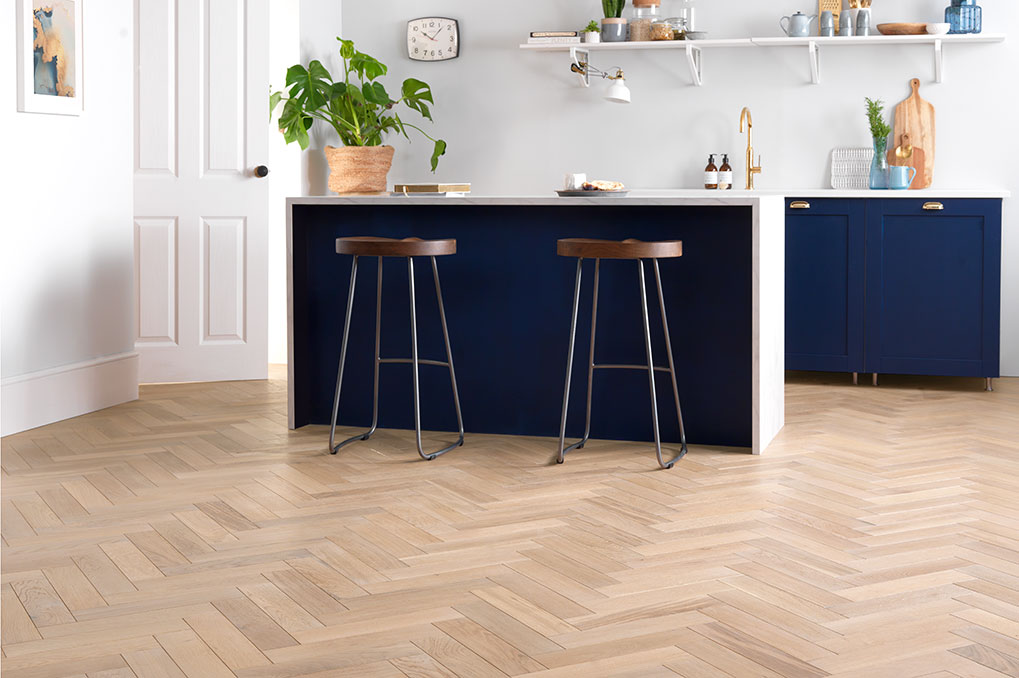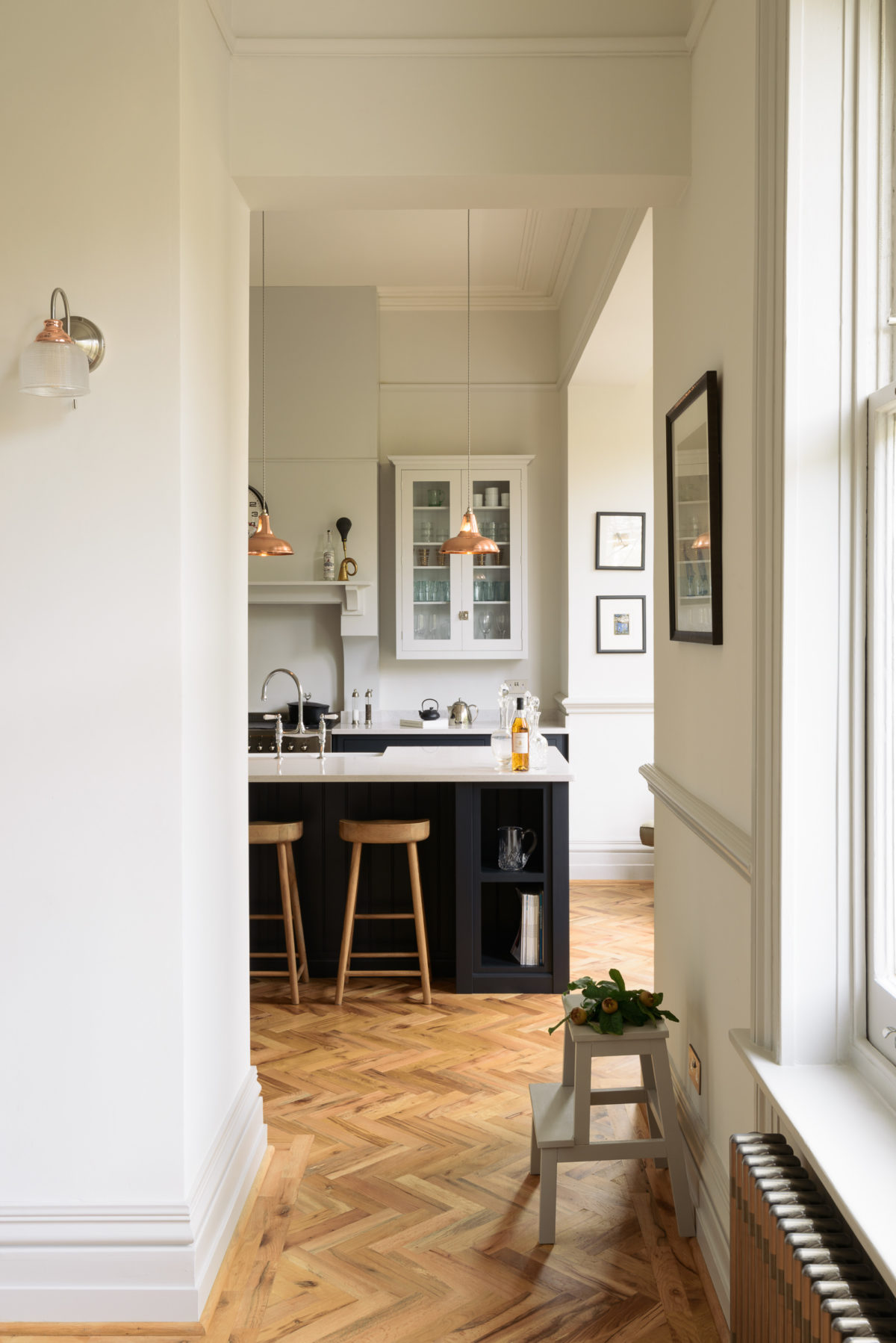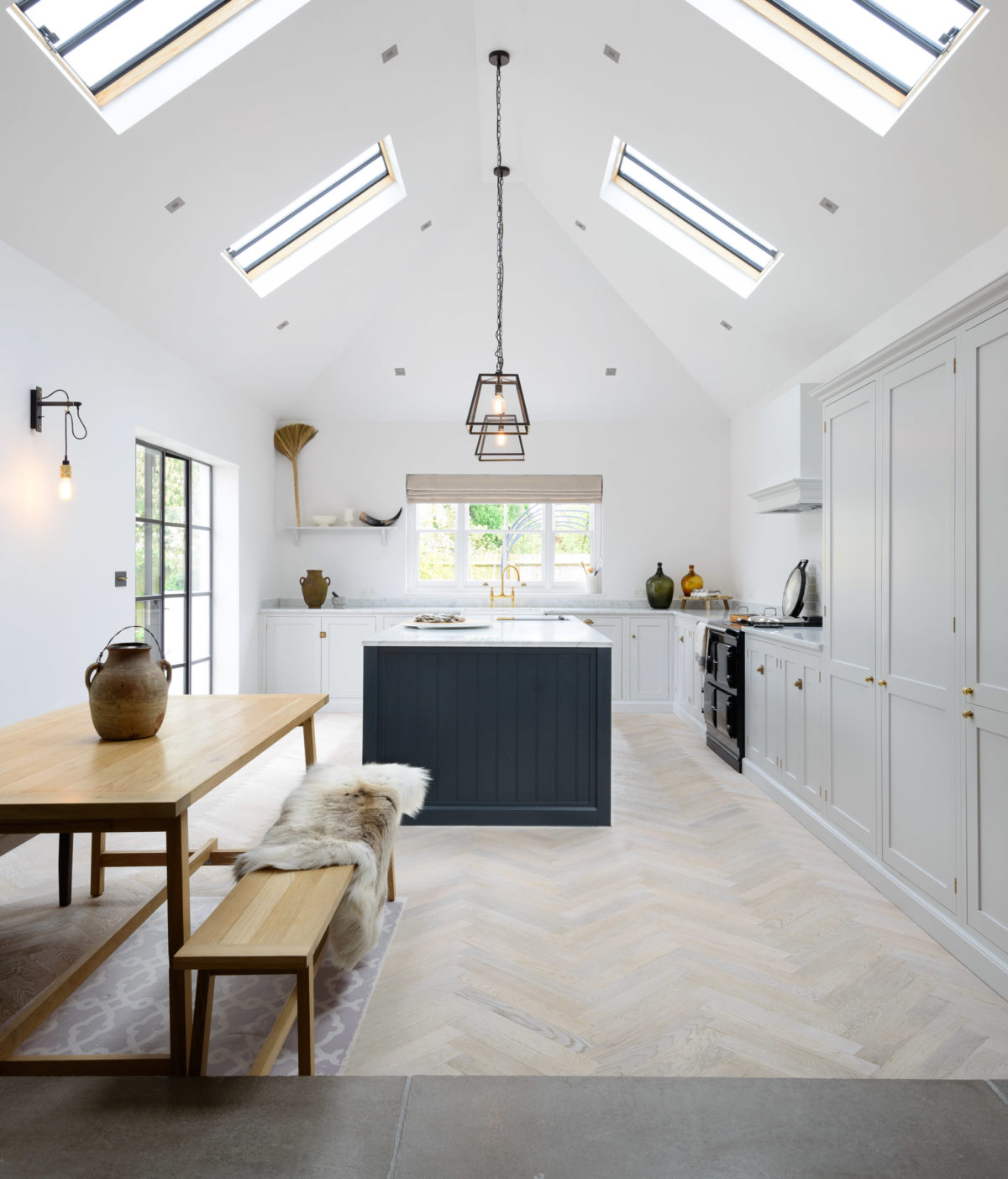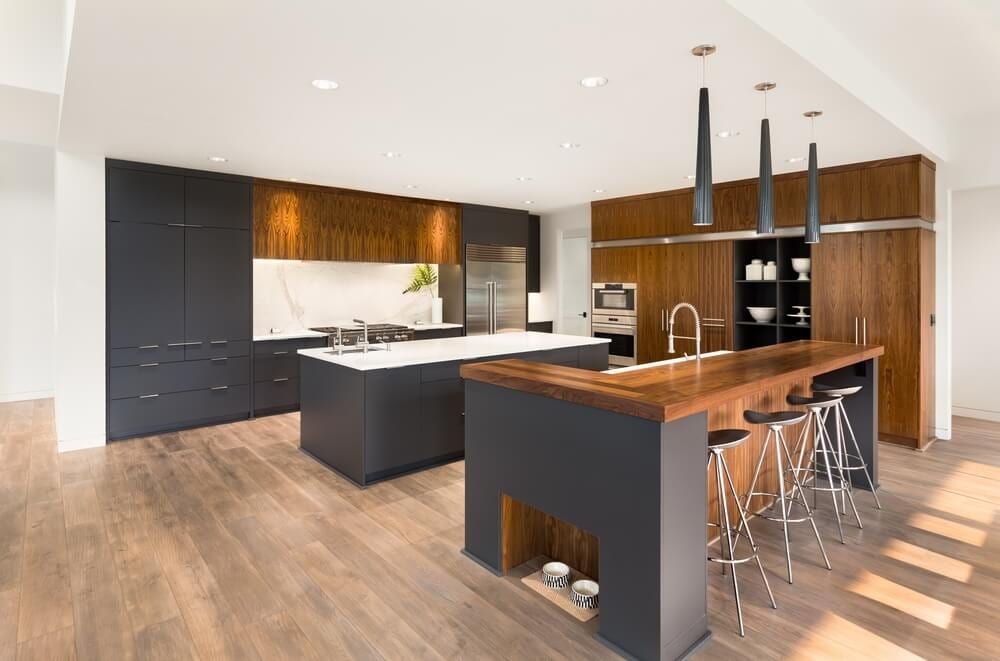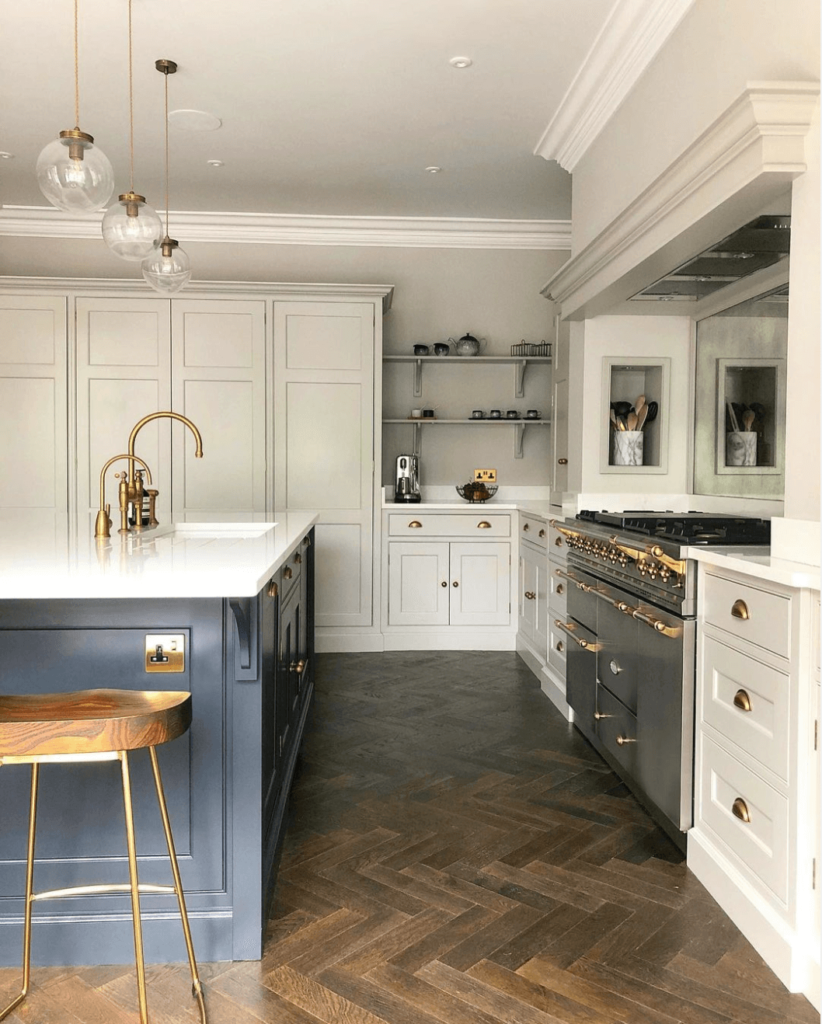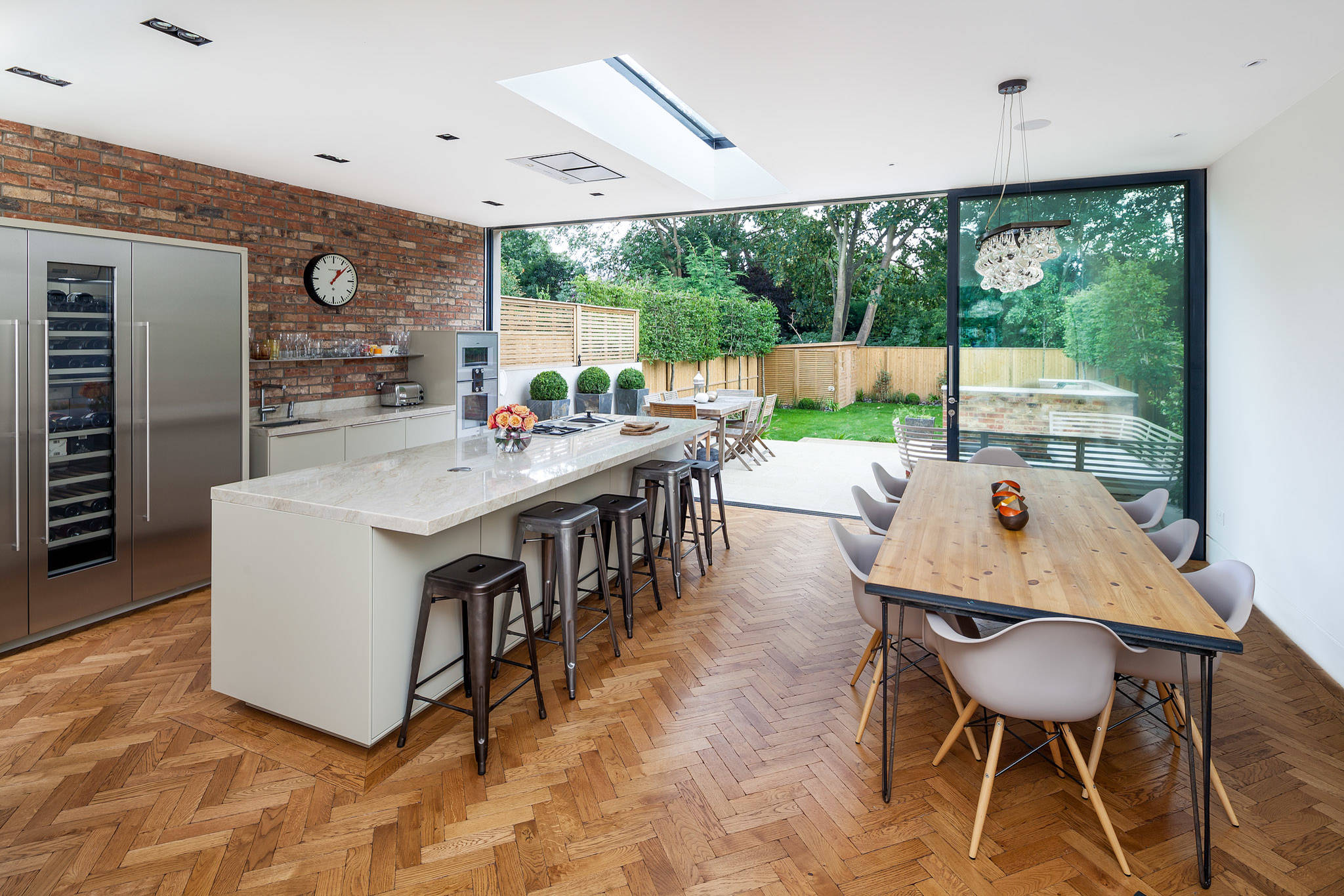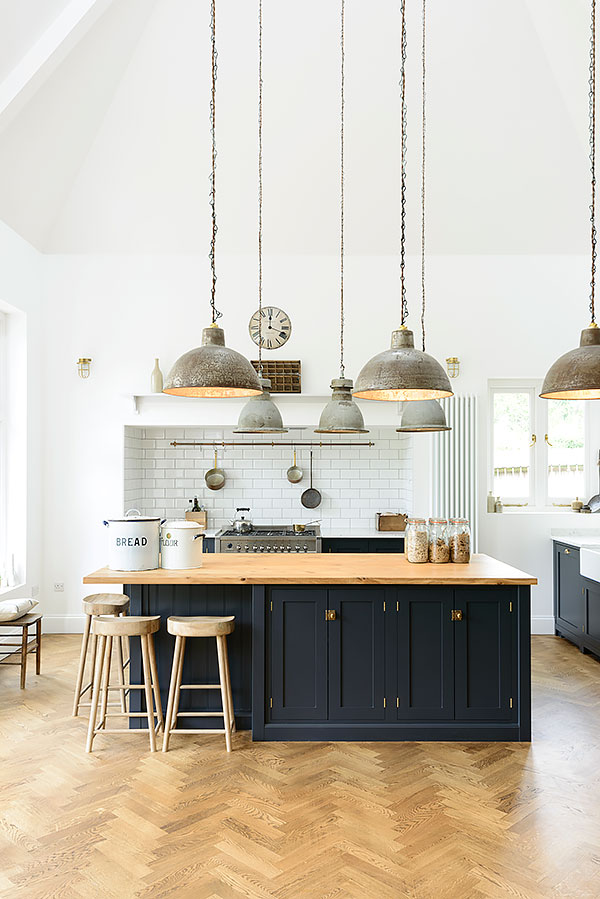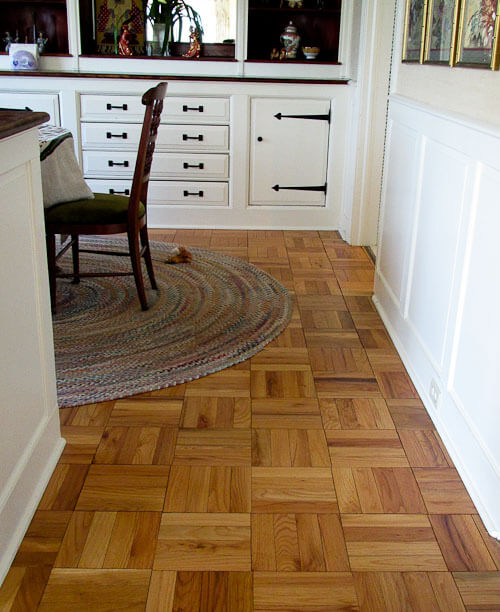The Benefits of Parquet Flooring in the Kitchen
Parquet flooring is becoming an increasingly popular choice for kitchens due to its numerous benefits. Here are some of the advantages of installing parquet flooring in your kitchen:
- Durability: Parquet flooring is known for its exceptional durability. It is constructed using small wooden blocks that are tightly fitted together, creating a strong and sturdy surface. This makes parquet flooring highly resistant to wear and tear, ensuring that it can withstand the heavy foot traffic and constant use in the kitchen. It is also less prone to damage from dropped objects or heavy furniture.
- Easy to Clean: The smooth surface of parquet flooring makes it easy to clean and maintain. Unlike other flooring options, parquet does not have grooves or seams where dirt and debris can accumulate. Regular sweeping and mopping with a mild cleaning solution are usually enough to keep it looking clean and fresh. This is particularly beneficial in the kitchen, where spills and stains are common.
- Timeless Beauty: Parquet flooring adds a touch of elegance and sophistication to any space, including the kitchen. The unique patterns and designs created by the arrangement of the wooden blocks bring a timeless beauty that can complement any kitchen style or décor. Whether you have a traditional or modern kitchen, parquet flooring can enhance its overall aesthetic appeal.
- Warmth and Comfort: One of the significant advantages of parquet flooring is its ability to provide warmth and comfort underfoot. The wooden blocks act as natural insulators, retaining heat and maintaining a comfortable temperature in the kitchen. This is particularly advantageous in colder climates or during winter months when stepping on cold flooring can be uncomfortable.
- Versatility: Parquet flooring comes in a wide range of wood species, finishes, and patterns, allowing you to choose the perfect style that suits your kitchen’s design and personal preferences. Whether you prefer a light or dark wood tone, a glossy or matte finish, or a herringbone or chevron pattern, there is a parquet flooring option available to match your vision.

How to Choose the Right Parquet Flooring for Your Kitchen
When it comes to choosing the right parquet flooring for your kitchen, there are several factors to consider. The kitchen is a high-traffic area that is prone to spills, stains, and heavy furniture. Therefore, it is essential to select a parquet flooring that is durable, water-resistant, and easy to maintain.
Firstly, consider the material of the parquet flooring. There are various options available, such as solid wood, engineered wood, laminate, and vinyl. Solid wood parquet flooring is a popular choice for kitchens due to its natural beauty and durability. However, it may require more maintenance and is susceptible to water damage. Engineered wood, on the other hand, offers the same aesthetic appeal as solid wood but with enhanced durability and water resistance.
Secondly, evaluate the finish of the parquet flooring. The finish not only enhances the appearance of the flooring but also provides protection against scratches and stains. Choose a finish that is specifically designed for kitchen use, such as a water-based polyurethane or an oil-based finish. These finishes create a protective barrier that can withstand the demands of a kitchen environment.
Next, consider the color and design of the parquet flooring. The right color and design can complement the overall style of your kitchen. Lighter shades can create a sense of spaciousness, while darker shades can add warmth and coziness. Additionally, consider the pattern of the parquet flooring, such as herringbone or chevron, to add visual interest and uniqueness to your kitchen.
Another important factor to consider is the installation method of the parquet flooring. Some parquet flooring options require professional installation, while others come with a click-lock system that allows for easy DIY installation. Consider your level of expertise and the time you are willing to invest in the installation process.
Lastly, consider the budget for your parquet flooring. Different materials and finishes come at different price points. Solid wood parquet flooring tends to be more expensive than laminate or vinyl options. It is essential to weigh the cost against the durability and lifespan of the flooring to make an informed decision.
Installation Tips for Parquet Flooring in the Kitchen
- Prepare the Subfloor: Before installing parquet flooring in your kitchen, it is essential to prepare the subfloor properly. Ensure that the subfloor is clean, dry, and level. Remove any previous flooring and repair any cracks or damages on the surface.
- Acclimatize the Parquet: Parquet flooring needs to acclimatize to the kitchen’s environment before installation. Place the flooring in the kitchen for at least 48 hours to allow it to adjust to the temperature and humidity levels. This will prevent any potential warping or buckling after installation.
- Use Suitable Underlayment: Consider using a suitable underlayment for your parquet flooring in the kitchen. Underlayment provides extra cushioning, noise reduction, and moisture barrier, which is especially important in areas prone to spills and moisture.
- Follow Installation Guidelines: Follow the manufacturer’s instructions for installing parquet flooring in the kitchen. Different types of parquet may have specific installation requirements, such as adhesive application methods or interlocking systems. Adhering to these guidelines ensures a proper and durable installation.
- Allow for Expansion Gaps: Parquet flooring, like any other wood flooring, expands and contracts with changes in temperature and humidity. Leave expansion gaps around the perimeter of the room and at doorways to accommodate these natural movements. Cover the gaps with baseboards or transition strips for a finished look.
Maintenance Tips for Parquet Flooring in the Kitchen
- Regular Cleaning: To maintain the beauty and longevity of your parquet flooring in the kitchen, regular cleaning is crucial. Sweep or vacuum the floor regularly to remove dirt, dust, and debris. Use a damp mop with a mild cleaner specifically designed for wood floors to remove any spills or stains.
- Wipe Up Spills Immediately: Spills in the kitchen are common, and it is important to wipe them up immediately to prevent moisture from seeping into the parquet flooring. Moisture can cause warping or staining of the wood. Use a clean, dry cloth or mop to absorb any spills promptly.
- Avoid Harsh Chemicals: Avoid using harsh chemicals, abrasive cleaners, or excessive water when cleaning parquet flooring in the kitchen. These can damage the wood’s finish or cause discoloration. Instead, use recommended wood floor cleaners that are gentle and safe for use on parquet.
Trending Designs and Styles for Parquet Flooring in Modern Kitchens
Herringbone Pattern:
One of the most popular designs for parquet flooring in modern kitchens is the herringbone pattern. This pattern creates a visually stunning effect by arranging the wooden tiles in a zigzag pattern. The herringbone pattern adds a touch of elegance and sophistication to any kitchen, making it a perfect choice for those looking to add a timeless appeal to their space.
Chevron Pattern:
Similar to the herringbone pattern, the chevron pattern is another trend that has gained popularity in modern kitchen designs. The chevron pattern also features a zigzag arrangement of wooden tiles, but with a difference. In this pattern, the tiles are cut at an angle to create a V-shaped design. The chevron pattern adds a modern and stylish look to any kitchen space, making it a popular choice among homeowners.
Wide Planks:
In recent years, there has been a shift towards using wider planks for parquet flooring in modern kitchens. Wide planks not only create a sense of openness and spaciousness but also add a touch of rustic charm to the kitchen. This trend is particularly popular in farmhouse-style kitchens or those aiming for a more natural and organic look.
Lighter Tones:
When it comes to choosing the right color for parquet flooring in modern kitchens, lighter tones are trending. Lighter shades such as blonde, whitewashed, or pale gray are being preferred over darker hues. Lighter tones help create an airy and bright atmosphere in the kitchen, making it appear larger and more inviting.
Geometric Designs:
For those looking to make a bold statement in their kitchen, geometric designs are a popular choice. Geometric patterns such as hexagons, diamonds, or intricate motifs can add a contemporary touch to the space. These designs create visual interest and can be used as a focal point in the kitchen, enhancing its overall aesthetic appeal.
Mixed Materials:
Another trend in parquet flooring for modern kitchens is the use of mixed materials. Combining different materials such as wood, stone, or metal can create a unique and eclectic look. This trend allows homeowners to showcase their creativity and personalize their kitchen space.
What kind of flooring should I go for in my kitchen? – The deVOL
What kind of flooring should I go for in my kitchen? – The deVOL
Should You Use Hardwood Floors in Kitchens and Bathrooms?
What Is Parquet Flooring? (And Why You Need It In Your Home
Kitchen parquet flooring – a natural kitchen flooring option
Parquet Floor Kitchen Ideas – Photos u0026 Ideas Houzz
Parquet Flooring Kitchen Sale Online, 50% OFF www.alforja.cat
900+ Top Parquet Flooring ideas parquet flooring, flooring, parquet
Fingerblock parquet flooring – an authentic choice for wood floors
Related Posts:


